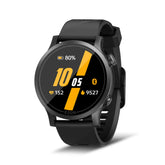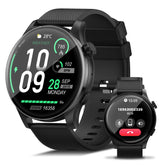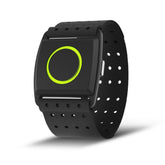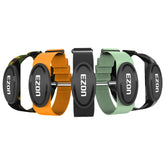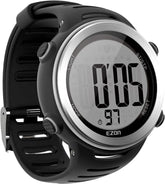Climbing 101: Master the Rock with Heart Rate - Guided Training
Climbing is a thrilling blend of strength, strategy, and stamina—and with the right climbing techniques and heart rate-guided training, even beginners can tackle the wall with confidence. This guide breaks down essential skills, shows how a heart rate monitor elevates training, and provides structured plans to build strength and endurance safely. Whether you’re starting at the gym or eyeing your first outdoor route, learn to climb smarter, not harder.
1. Climbing Techniques: The Foundation of Movement
A. Footwork: The Key to Efficiency
- Edging: Press the edge of your shoe on small footholds (e.g., on slab routes) — keep hips close to the wall to reduce arm fatigue.
- Smearing: Use the rubber of your shoe to stick to featureless surfaces by applying downward pressure (vital for vertical/overhanging routes).
- Tip: Practice “stepping through” (crossing one foot in front of the other) to maintain balance on dynamic moves—film yourself to refine technique.
B. Handhold Mastery
- Jugs: Large holds for resting; grab them with a relaxed grip to save energy for harder sections.
- Crimps: Grip small edges with fingers bent at the first joint—start with shallow crimps and gradually increase difficulty to avoid pulley injuries.
- Pinches: Squeeze holds between thumb and fingers for aretes or slopers, engaging forearms and core for stability.
C. Body Positioning
- Dynamic Moves: Controlled jumps between holds—use hip momentum to generate power, landing softly to stick the grip.
- Static Climbing: Slow, precise movements for delicate balance problems (e.g., slab boulders), focusing on foot placement and weight distribution.
2. Why a Heart Rate Monitor is a Climber’s Secret Weapon
A. Train in the Right Intensity Zones
-
Heart Rate Zones for Climbing:
- Zone 1 (50–60% Max HR): Recovery climbs (easy V0–V2 routes) to improve movement patterns without fatigue.
- Zone 3 (70–80% Max HR): Endurance-focused sessions (e.g., 4x4-minute climbs with 2-minute rest) to build sustained power.
- Zone 5 (90–100% Max HR): Max-effort bouldering (1–2 tries per problem) to boost finger strength and explosiveness.
- Pro Tip: Use a heart rate monitor to avoid overtraining—vibration alerts keep you from redlining (excessive fatigue) during drills.
B. Recovery Tracking for Injury Prevention
- Resting Heart Rate (RHR): A 5 BPM increase from your baseline signals fatigue—take an extra rest day to avoid elbow/shoulder injuries.
- Heart Rate Variability (HRV): High HRV means your body is ready for intensity; low HRV (e.g., after a hard session) calls for gentle mobility work (yoga, foam rolling).
3. Strength Building: Train Like a Pro
A. Finger Strength Drills
- Hangboard Basics: Start with 10-second hangs on jugs (3x5 sets, 60-second rest) — progress to smaller holds (slopers, crimps) over 4–6 weeks.
- Grip Diversity: Train open-hand, crimp, and pinch grips separately (2x/week for 20 minutes) to build balanced strength.
B. Core & Back Training
- Dead Bugs: Lie on your back, extend opposite arm/leg to improve anti-rotation strength (3x15 reps per side)—critical for maintaining body tension on the wall.
- Plank Variations: Side planks with hip lifts and weighted planks to support torso stability during reaches and dynos.
C. Sample Strength Session
- Warm-up: 10 minutes of easy climbing + finger stretches.
- Hangboard: 3x15 seconds on jugs (45-second rest).
- Core: 3x20 Russian twists + 3x30-second side planks.
- Cool-down: 5 minutes of shoulder stretches and deep breathing.
4. Endurance Training: Conquer Long Routes
A. Circuit Training for Sustained Effort
- Continuous Climbing: 20–30 minutes of easy-moderate routes (V1–V3) at Zone 2 (60–70% Max HR) to build aerobic base.
- Rope Climbing (For Sport/Trad Climbers): 3x5-minute ascents with 3-minute rest, focusing on steady breathing and pacing—use a heart rate monitor to ensure you’re not exceeding Zone 3 too early.
B. Boulder Endurance Drills
- Repeaters: 8–10 attempts on a V2–V3 boulder with 30-second rest between tries—train the ability to recover quickly during multi-pitch climbs.
- 4x4 Protocol: 4 climbs of 4 minutes each (on V2–V4), with 4 minutes rest between—ideal for building lactic acid tolerance.
5. 4-Week Beginner Training Plan
Week 1–2: Technique & Foundation
- 3 Days/Week: 45 minutes of climbing focusing on footwork and handhold identification (V0–V1 routes).
- Strength: 2x/week core workouts (planks, glute bridges) and finger hangs on jugs.
Week 3–4: Intensity & Endurance
- 4 Days/Week: Add 1 day of endurance circuits (20 minutes of continuous climbing) and 1 day of boulder repeaters (V2 routes).
- Heart Rate Focus: Use your monitor to ensure endurance days stay in Zone 2–3, saving max effort for short, powerful moves.
6. Safety Tips for New Climbers
A. Warm-Up Rigorously
- 10-Minute Routine: Climb easy routes, do arm circles, and activate forearms with a resistance band to increase blood flow and prevent tendon injuries.
B. Fall Safely
- Indoor Bouldering: Tuck into a ball and roll when falling onto crash pads—never stick your arms out to break falls.
- Outdoor Climbing: Always climb with a spotter for highballs; check landing zones for rocks or uneven ground.
C. Rest and Recover
- 48-Hour Rule: Rest fingers for 2 days after intense crimping sessions to avoid pulley strains.
- Track Overtraining: Use your heart rate monitor to log RHR and HRV—adjust training volume if recovery metrics decline.
7. Gear Essentials for Beginners
A. Climbing Shoes
- Indoor/Moderate Routes: Versatile shoes with moderate downturn (e.g., La Sportiva Tarantula) for comfort and edging ability.
- Steep Routes: Aggressive, downturned shoes (Scarpa Instinct) to maximize toe power on overhangs—break them in gradually to avoid blisters.
B. Crash Pad (For Bouldering)
- Thickness: 4–6 inches with dual-zone foam (e.g., Mad Rock Mad Pad) to absorb falls from 15+ feet.
C. Heart Rate Monitor Features to Look For
- Wrist-Based Accuracy: Models like EZON Heart Rate Series offer real-time HR tracking without chest straps, ideal for dynamic movements.
- Long Battery Life: 20+ hours of continuous use for all-day climbing sessions at the crag.
8. Common Mistakes to Avoid
- Ignoring Footwork: Poor foot placement doubles arm effort—spend 50% of beginner sessions refining foot technique.
- Overtraining Fingers: Focus on grip variety and recovery—strong forearms are useless with injured pulleys.
- Skipping Heart Rate Zones: Training too hard, too soon leads to burnout—use your monitor to stay within sustainable intensity.
Climb with Purpose, Progress with Data
With intentional climbing techniques, strategic strength building, and a heart rate monitor to guide intensity, you’ll transform from a nervous beginner to a confident climber. Remember, every hold is a lesson—prioritize form, respect recovery, and let data from your monitor prevent mistakes and optimize gains.
Gear up with a reliable heart rate monitor, lace up your shoes, and hit the wall with a plan. Whether you’re chasing your first V0 send or eyeing an outdoor project, climb with precision, and let each session be a step toward mastering the rock.
EZON Watch: Professional sports technology brand
https://ezonwatch.com
https://ezonwatch.com
